June 23, 2023
11:01 AM
By OrgChart Team
In today’s political climate, transparency is integral to maintaining a functioning democracy. People may not always agree with who’s in charge or how tax money is spent, but visualizing a government agency’s workflow goes a long way to promote transparency and build public trust.
Government agencies face unique challenges that can hinder transparency efforts and disrupt even the most adaptable organizational structures, unlike their counterparts in the private sector.
Bureaucratic procedures and requirements bind government agencies. They tend to have more complex structures, with multiple divisions, reporting lines, and oversight factions. Moreover, years of navigating rapidly changing political landscapes and having to start from scratch have made government offices resistant to change.
Government offices can enhance their collaborative efforts by maintaining and sharing organizational charts to promote transparency and accountability. Organizational charts play a vital role in demystifying government agency operations. They give the public insights into internal hierarchy, relationships, and decision‑making processes.
OrgChart is a purpose-built platform that addresses the inherent complexities of government agency operations. It allows you to visualize personnel, gain insights, and model workforce changes in one convenient solution.
This article serves as a comprehensive guide to organizational charts for government agencies. We will explore the benefits and best practices for developing an organizational chart for your government office and delve into how solutions like OrgChart empower government HR teams to unlock their full potential.
An organizational chart, or “org chart,” is a helpful diagram illustrating staff and departmental organization. It’s commonly used in businesses and nonprofits of all sizes. In the context of government agencies, the org chart visually represents the layout of offices, departments, divisions, branches, programs, and the distribution of authority from the highest-ranking officials to the general workers.

Government agencies, with their diverse mandates and multifaceted responsibilities, rely on well-defined organizational structures to effectively carry out their missions. Population size and available resources influence the complexity of these structures.
Take, for example, a municipal agency serving 5,000 people. In this case, their org chart would comprehensively view individual staff or positions, ensuring transparency and accountability. On the other hand, a state government org chart might focus more on agency names and their relationships, offering a broader perspective on the overall functioning.
As governments evolve and mature, they strive for streamlined and efficient operations. However, annual elections and changes in public policy can disrupt progress. Staff cuts due to reduced funding, or the creation of new oversight committees are common occurrences that reshape the organizational structure.
Here, we delve into five common types of organizational structures employed by government agencies. Each framework brings unique advantages and challenges, from traditional hierarchical and functional structures to the increasingly popular matrix and network-based agencies.
A hierarchical organizational structure in the public sector takes a pyramid shape and features a top-down chain of command. It establishes clear lines of authority and decision-making flowing from top-level executives to lower-level staff.
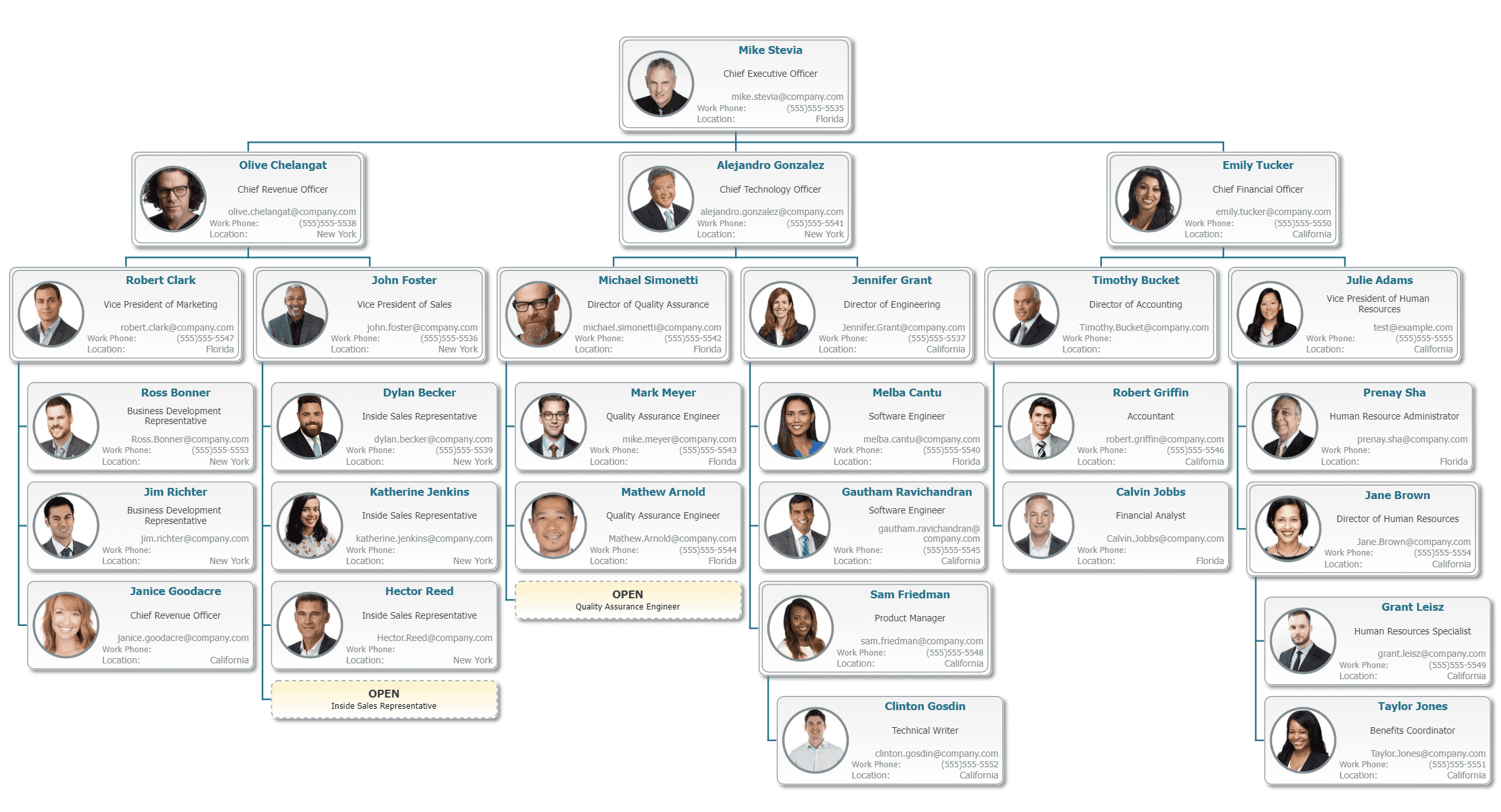
Under the mayor, city manager, or town administrator, directors oversee functional departments such as finance, public works, and community development. Within each department, supervisors manage day-to-day operations, with positions like forepersons in the public works department and finance managers in the finance department.
At the bottom of the hierarchy are the administrative and general labor workers who handle clerical tasks and customer service and provide labor for jobs like repairing traffic lights and maintaining sidewalks.
It’s important to note that while a hierarchical structure is prevalent in the public sector, many government agencies also incorporate elements of other organizational structures to address specific needs.
Regardless, it’s essential to consider the following pros and cons when contemplating a hierarchical structure for your government agency:
In a functional organizational structure, employees are grouped based on their specific functions or areas of expertise. This structure organizes employees with similar skills or roles into departments like finance, public relations, or parks and recreation. Each department focuses on its specialized area, led by a manager or director responsible for overseeing the functions within that department.
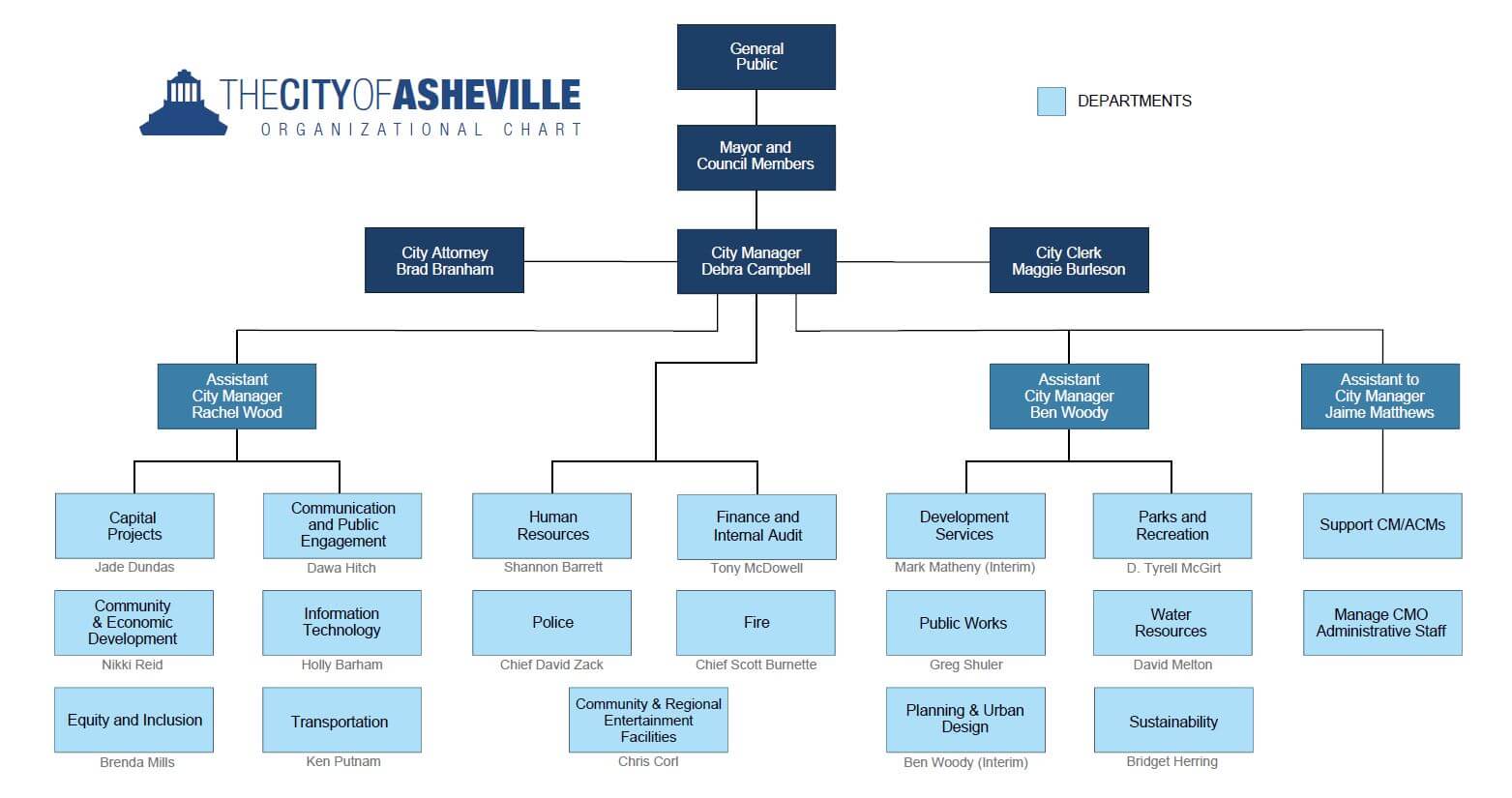
The functional structure also allows for specialization, clear career paths, and efficient coordination within functional units. However, it can sometimes lead to silos and difficulties in cross-functional collaboration.
As with many other types of organizational structure, a functional structure does have an inherent hierarchy, although a traditional hierarchical structure defines it more explicitly. Comparatively, functional departments are a common feature of many hierarchical organizations.
So, while a hierarchical structure can have functional departments, and a functional structure can have an inherent hierarchy, it’s important to note that the two terms refer to different aspects of organizational design. The hierarchical structure primarily emphasizes the chain of command and levels of authority, while the functional structure focuses on grouping employees based on their areas of expertise. In practice, these concepts often coexist, and many government agencies combine elements of both hierarchical and functional structures to suit their specific needs.
An excellent example of a government agency with a functional structure but inherent hierarchy is the city of Asheville, North Carolina. Its functional departments include Parks and Recreation, Information Technology, Human Resources, Transportation, and more. Each department has a director and managers, but those department heads are experts in their respective areas.
Now let’s examine the pros and cons of operating a government agency in a functional organizational structure:
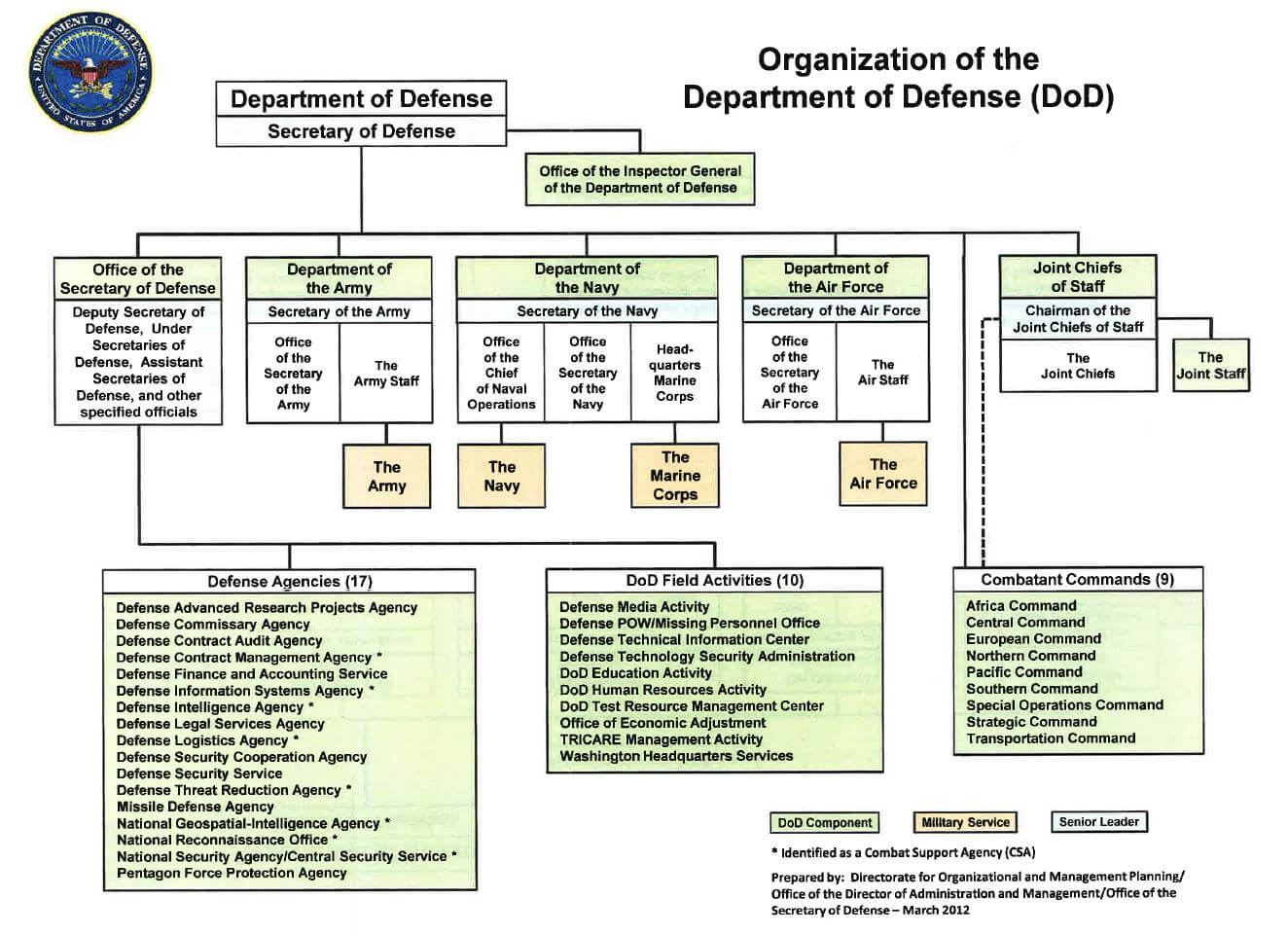
Larger and more complex government agencies often choose a divisional organizational structure. As these agencies grow in size and complexity, it becomes necessary to establish divisions to coordinate their diverse functions better.
Complex government agencies handle myriad issues and have multiple focus areas. These agencies can create specialized units that concentrate on specific programs, services, or geographic regions by implementing a divisional structure.
This division of labor allows for a more efficient allocation of resources and expertise within the agency. Each division operates independently and is responsible for its activities, goals, and resources while still being part of the larger agency.
In this structure, divisions function like separate entities within the agency, often with their specialized teams and leaders. They have more autonomy and decision-making power than a traditional hierarchical structure where all decisions are made at the top level.
For instance, the Department of Defense (DoD) in the United States is a highly complex government agency that incorporates elements of a divisional structure. The DoD is divided into various departments, including the Army, Navy, Air Force, and Marine Corps, each responsible for specific military branches. Within each division, further subdivisions, such as combatant commands, functional commands, and support agencies, are all working together to fulfill the broader national defense mission.
A less complex but equally multifaceted government agency with components of a divisional structure is the Rhode Island Department of Revenue. The Rhode Island DOR is divided into functional areas such as the Division of Taxation, the Division of Motor Vehicles, and the Rhode Island Lottery. A director or administrator leads each division and operates as an independent government entity.
Divisional structures in complex agencies like the U.S. Department of Defense and the Rhode Island Department of Revenue help ensure effective management, coordination, and specialization. They allow the agency to efficiently tackle multifaceted challenges and provide specialized services in their respective areas.
However, this structure may also introduce a duplication of efforts, inefficiencies, and reduced coordination among divisions, leading to challenges in resource allocation and overall organizational coherence.
Now let’s consider the pros and cons of a divisional structure:
The matrix structure is another organizational option for complex government entities. It combines aspects of both functional and divisional structures, allowing for multiple reporting lines and cross-functional teams.
In a matrix structure, employees report to both a functional manager based on their expertise and a project or team manager based on the specific project they’re working on. Government agencies that adopt a matrix structure can leverage the benefits of functional specialization while promoting collaboration across departments for project-based initiatives.
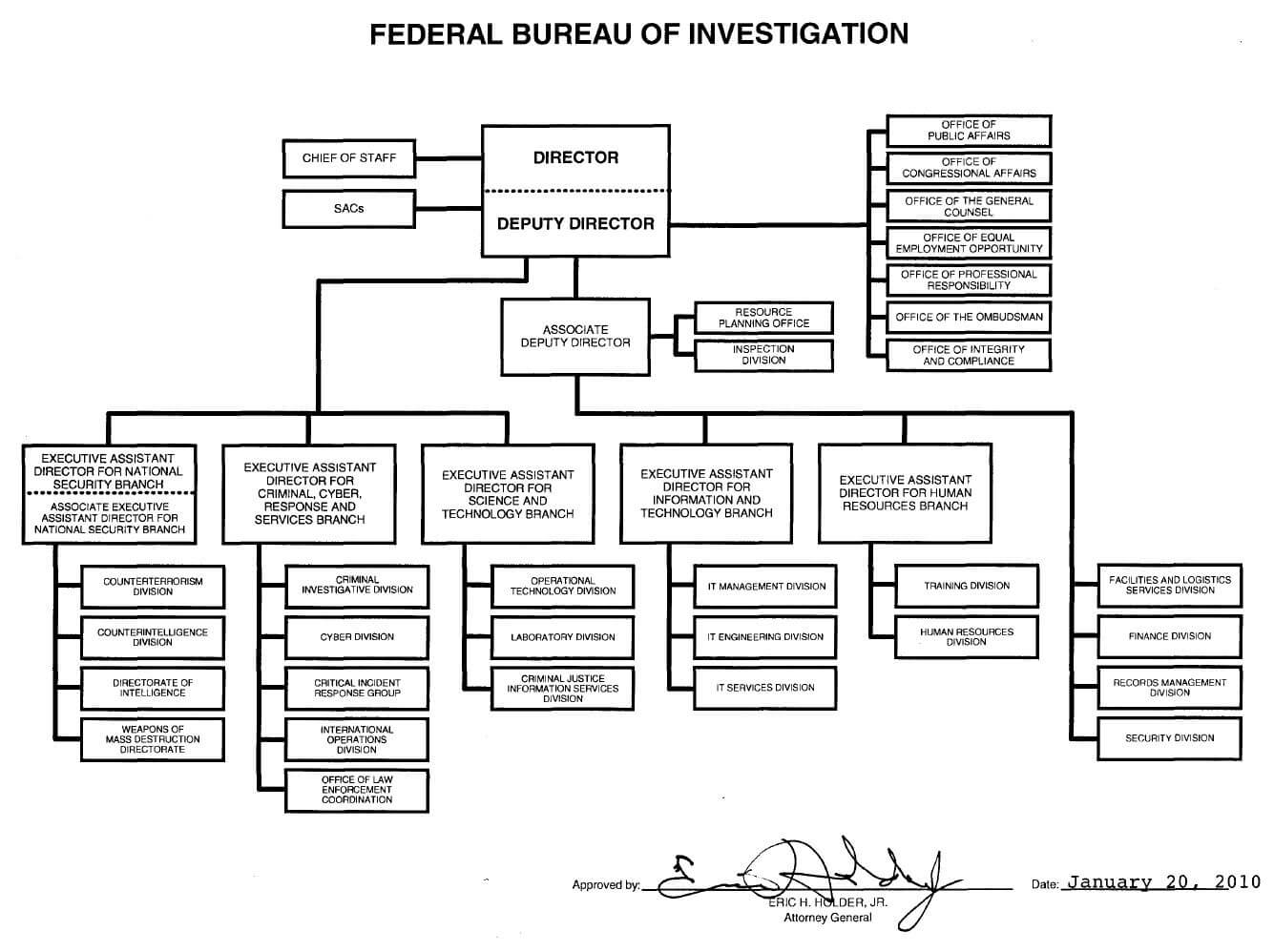
One such example is the Federal Bureau of Investigation (FBI). The FBI is divided into specialized branches, and within each branch, there are various divisions where employees work on assignments under the direction of a project leader.
For instance, within the National Security Branch are divisions for Counterterrorism, Counterintelligence, and Weapons of Mass Destruction. FBI agents are typically assigned to a specific division but can also work on special assignments in other divisions. The matrix structure can be highly advantageous when FBI agents from the Counterterrorism Division collaborate with agents from the Weapons of Mass Destruction Division to address a known threat. In this example, agents would report to an assignment leader and their division head.
A matrix structure offers numerous advantages for public sector organizations, including improved internal collaboration, skill sharing, and reduced burnout risk for managers. However, it also has the potential to be more expensive and challenging to evaluate, which are significant disadvantages that the public may not tolerate.
To mitigate these impacts, government agencies must allocate resources and personnel effectively to support a matrix structure. This may involve investing in administrative support, leveraging technology, and regularly evaluating and optimizing processes to alleviate challenges and ensure the delivery of high-quality public services to the community.
Here are other pros and cons of a matrix structure in government agencies:
The network organizational structure is another option for government agencies seeking to enhance collaboration and leverage specialized expertise. In this structure, individuals with specific skills and expertise are assigned to projects or causes, which may be distributed across divisions or partnered with external organizations.
One key characteristic of the network structure is its decentralized approach to decision-making. The traditional manager hierarchy is replaced by a smaller group of visionary executives and autonomous teams, where employees at all levels are empowered to make decisions. This agility allows agencies to respond quickly to change. However, some agencies may retain team leads or middle managers to comply with regulatory or oversight requirements.
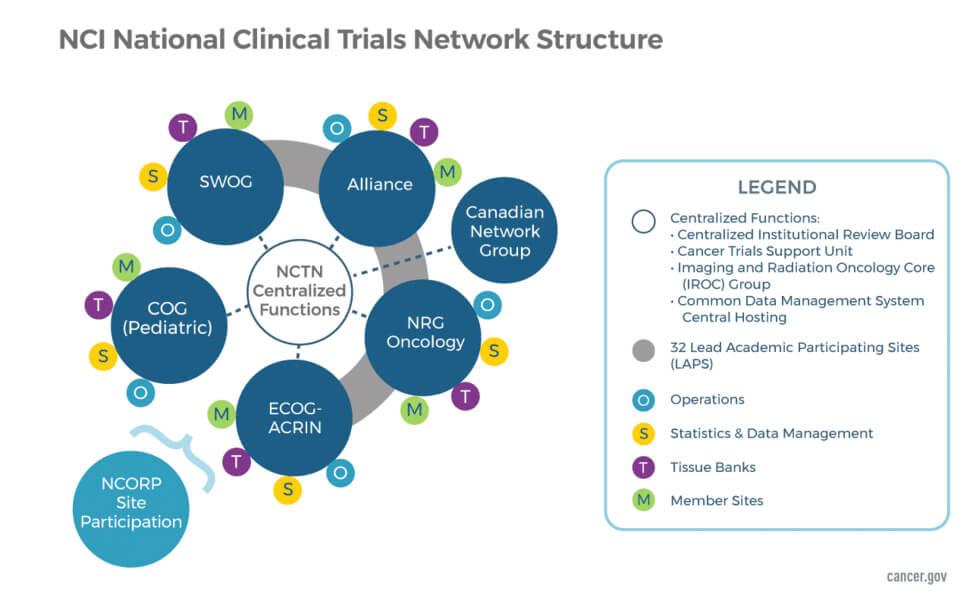
The National Institutes of Health (NIH) is an example of a complex government entity with multiple divisions within a network structure. The NIH consists of 27 different branches, some of which operate with a network structure alongside their divisional framework.
The National Cancer Institute (NCI), a division of the NIH, is responsible for cancer research and training. One of its divisions, the National Clinical Trials Network (NCTN), operates as a network of internal and external organizations that conduct cancer clinical trials globally. NCTN’s network includes several clinical trial groups managing their operations, with a central division providing data management for all trials.
The network structure adopted by NCTN allows scientists to focus solely on their research trials, free from bureaucratic processes. This autonomy and collaborative environment provide significant advantages, driving NCTN’s global mission to advance cutting-edge cancer research, benefiting both the scientific community and patients worldwide.
Government agencies should consider the following pros and cons when evaluating a switch to a network organizational structure:
Modern organizational chart platforms offer many benefits for organizations in the private or public sector. These charts are vital in clarifying roles, responsibilities, and reporting lines. This clarity fosters better coordination and communication among employees, resulting in smoother workflows and streamlined decision‑making.
Beyond their visual representation, modern org chart platforms have the power to facilitate strategic planning and resource allocation. By providing a comprehensive overview of employees and their functions, these platforms allow HR leaders to model reorganization scenarios, visualize underperformers, and track important diversity, equity, and inclusion (DEI) goals.
With platforms like OrgChart, you not only gain the ability to visualize your workforce and plan for the future, but you also gain valuable insights from your data to make strategic decisions.

Government agencies often have complex structures due to multiple levels of governance and diverse functions. Org charts bring much-needed clarity to these structures by visually representing hierarchies, reporting lines, and interdependencies between branches and divisions. This transparency helps employees, partners, and the public understand the agency’s organization and how different parts of the interact.
Government agencies are subject to specific laws, regulations, and oversight. Org charts demonstrate compliance by illustrating the agency’s reporting lines, decision-making authority, and accountability mechanisms. This transparency ensures adherence to legal and regulatory requirements, fostering accountability for government actions.
Government agencies must often coordinate efforts across different divisions or external agencies to address complex public issues. Org charts enable a clear understanding of the roles and responsibilities of other agencies, facilitating effective coordination, information sharing, and collaboration. They help identify critical points of contact, establish communication channels, and streamline efforts.
Government agency budgets and resources are frequently subject to scrutiny and oversight. Org charts assist in resource allocation and budget planning by providing a comprehensive view of the agency’s structure and functions. This helps identify areas of resource concentration, allocate funds effectively, and justify budgetary decisions to stakeholders and oversight bodies.
Government agencies serve the public and are accountable to citizens. Organizational charts contribute to transparency by making the agency’s structure and decision-making processes accessible to the public. They help citizens understand how the government is organized, who is responsible for specific areas, and how to engage with different departments or units. This promotes public trust and confidence in system.
Government agencies require effective succession planning to ensure continuity and smooth transitions in leadership and critical positions. Org charts aid in identifying key roles, potential successors, and career paths within the agency. This assists in talent management, workforce planning, and developing plans for knowledge transfer and institutional memory.
By utilizing modern org chart solutions, organizations, including government agencies, can harness these benefits to improve efficiency, accountability, transparency, and engagement.

OrgChart empowers government agencies worldwide to streamline HR operations and achieve goals efficiently. With advanced features and analytics, OrgChart surpasses the competition. Experience the benefits and more:
Request a demo today and discover how OrgChart can transform your government agency.
In today’s digital age, organizational chart software has become an invaluable tool for government agencies of all sizes. Regardless of their scale or scope, these entities can leverage technology to streamline their human resource operations and boost productivity.
By embracing this software and making their org charts accessible to the public, agencies can enhance transparency, foster accountability, and promote a deeper understanding of their work.
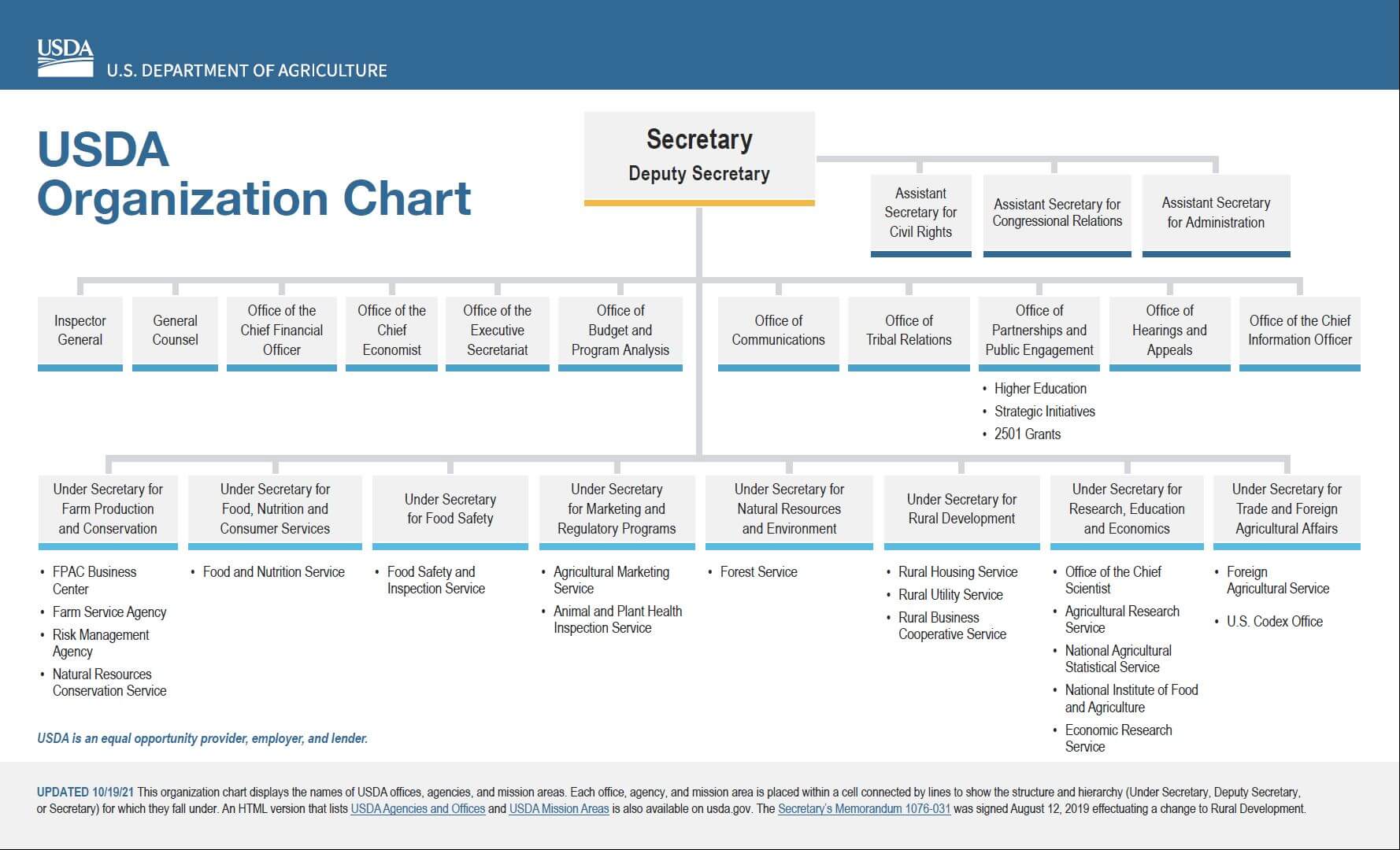

While larger government agencies often have well-established organizational charts, smaller organizations like town governments, local libraries, or tourism councils may find themselves in uncharted territory. (Literally.) They may never have created an org chart or have outdated versions. If you work in human resources for a government agency and have been tasked with developing or revamping an organizational chart, these instructions may help guide the process.
Remember that an organizational chart is a living document and should be updated regularly to reflect any changes in structure or personnel. It is a valuable reference tool for understanding the organization’s hierarchy, reporting lines, and functional relationships.
*OrgChart is more than just a charting tool. It provides valuable insights and strategic foresight for HR leaders. Model changes, monitor metrics, track goals, and align your structure with departmental objectives. Discover how to maximize your org chart design and workforce planning potential with OrgChart. Request a demo today.
Maintaining an effective organizational chart is essential for clarity, transparency, and efficient functioning in the complex landscape of government institutions. Government agencies face unique challenges that require tailored best practices for chart building. This compilation of best practices is specifically designed for government agencies and can help optimize your overall operational efficiency.

Your org chart design must appeal to your diverse constituents in its simplicity and effectiveness. The visual layout should engage the audience and convey complex information in an easily digestible manner. Avoid overloading your chart with different colors, shapes, or symbols. Instead, opt for a straightforward design that effectively communicates intricate dependencies and reporting lines.
A simple and well-designed org chart fosters public understanding and transparency. It removes unnecessary details and highlights key departments, allowing the general public to navigate and comprehend the agency’s operations efficiently. This promotes transparency and engagement with the community.
Many government agencies are subject to Section 508 compliance. Even if your agency isn’t, it’s advisable to design with universal accessibility and inclusivity in mind. Ensure that your org chart follows universal design principles using contrasting colors, legible fonts, and a clear hierarchy. This way, your charts will be accessible to everyone.
When appropriate, adding “Citizens” or “Residents” at the top of your org chart promotes goodwill and transparency to your constituents. Even if your agency is a sub-division within a sub-division and you feel far removed from the public voter, consider a version of your org chart that includes we the people at the top.
If your organization serves the public, then the public directly or indirectly governs your agency’s mission and operational objectives. Adding “Citizens” to your org chart gives the public a perceived sense of control over your tax-funded operations. This fosters goodwill and confidence, reminding your personnel that they, too, are civil servants who should prioritize the will of the people.
If your agency involves political appointments, include them in the organizational chart. Everyone must know who is ultimately responsible for policy decisions and strategic direction. This helps stakeholders understand the political dynamics within the agency.
Government agencies often face significant disruptions to their objectives after election seasons. To respond effectively to change, you need flexible org chart software that can adapt alongside your agency.
Platforms like OrgChart allow HR leaders to automate chart creation, integrate with HR databases, model workforce planning scenarios, and export charts in various formats. Leveraging technology like OrgChart helps HR teams turn what once was a static and manual diagram into a dynamic and flexible organizational planning tool.
Org charts shouldn’t be tucked away in a binder. Make them easily accessible to internal and external audiences to promote transparency, accountability, and public trust. Post charts in common office areas and on your intranet site. Regularly update and share them on your agency’s website and during new staff onboarding. Develop a checklist for where to publicize your org charts and stick to a chart maintenance schedule. Professional charting tools like OrgChart simplify these tasks.
With technology and automation, you can customize different versions of your chart for different audiences. Large agencies might have multiple charts, including a condensed version of the top division and a comprehensive version with expanded roles and departments. Creating additional charts doesn’t require extra time when you leverage technology like OrgChart, which allows you to generate a series of charts with just a click. Publishing different versions of your org chart to satisfy diverse audiences fosters goodwill and promotes public trust.
Disruptions in leadership and mission-based objectives, especially after election seasons, don’t always fulfill their intended purpose. When changes result in reduced services or diminished quality, citizens and regulatory authorities may seek answers. By keeping your past years’ org charts published and easily accessible, constituents and partners can observe trends and patterns among leadership or structural changes over time.
Don’t let your org charts collect dust on the shelf. They hold immense potential for workforce planning, talent management, and visualizing your agency’s structure. Use them to identify patterns, such as an increasingly top-heavy structure or a lack of women in leadership positions. By engaging with org charts, HR leaders can unlock valuable insights, drive strategic decision-making, and enhance organizational effectiveness within government agencies.
Remember, creating an effective organizational chart is a continuous process. Embrace the best practices outlined here, adapt them to your agency’s unique needs, and leverage technology to streamline the chart creation and maintenance process. Doing so promotes transparency, public trust, and efficiency within your government agency.
At the core of any democratic institution lies the crucial principle of transparency. It is through transparency that public institutions fulfill their obligations and remain accountable to the people they serve. However, in the hustle and bustle of government operations, organizational charts often get overlooked or become difficult to access, inadvertently withholding power from the public.

With OrgChart, HR professionals can revolutionize their workforce management by:
Discover how OrgChart can revolutionize your workforce management and unlock the full potential of your personnel data. Request a demo today and witness firsthand how OrgChart empowers government agencies to embrace transparency, drive efficiency, and foster collaboration for the benefit of the public.
Promote transparency and build public trust with our comprehensive guide to organizational charts for government agencies. In today’s political climate, visualizing a government agency’s workflow is essential for a functioning democracy. Government offices face unique challenges, such as complex structures and bureaucratic procedures hindering transparency. Our expert guide is here to help you navigate these obstacles and create an effective organizational chart tailored to your agency’s needs. Join us as we explore the common organizational structures for government agencies, identify which agencies benefit most from organizational charts, and provide step-by-step guidance on creating an efficient and effective organizational chart for your unique needs. Download our in-depth guide today and embark on a journey toward a more transparent and accountable future. Enhance collaboration, promote transparency, and unlock the full potential of your government agency. With OrgChart by your side, navigating the complexities of government agency operations has never been easier.